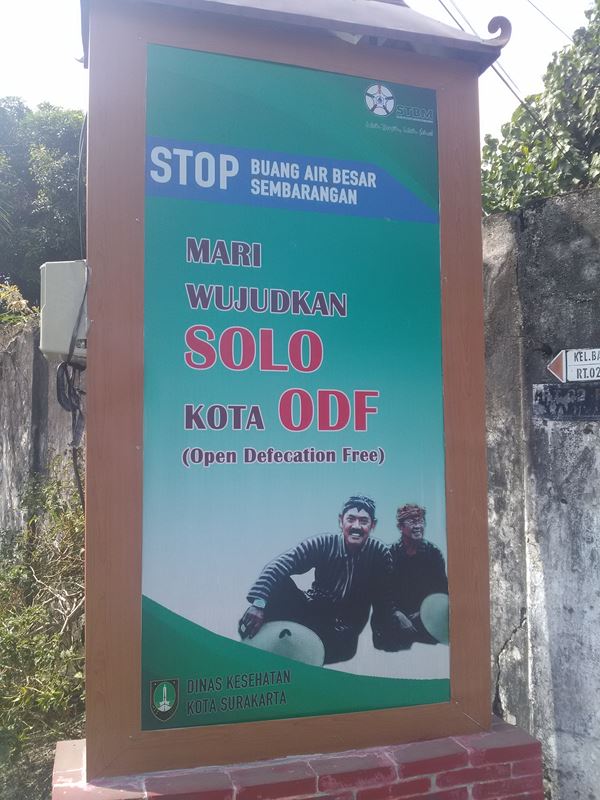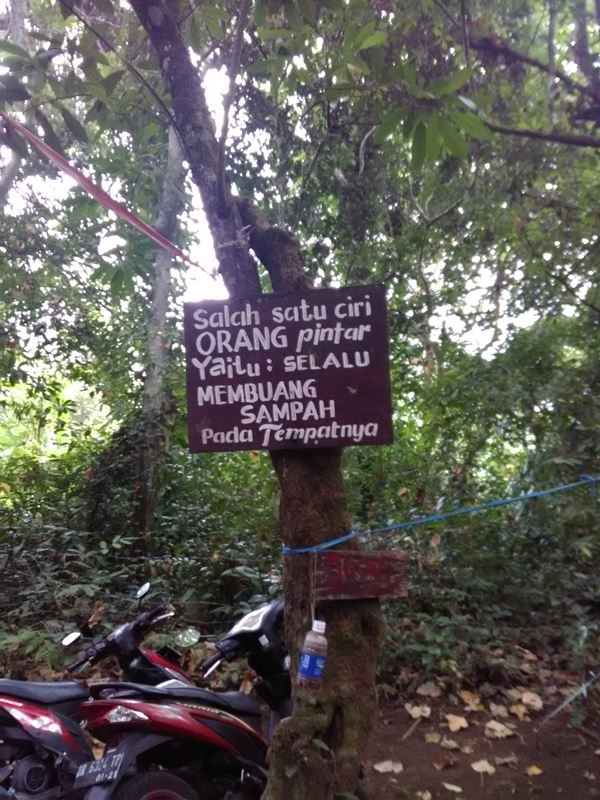A significant numbers of beaches in Indonesia are half-covered in waste.
This often comes at a shock for the fresh travelers that have been lured by the well-arranged Instagram pictures and the lush visuals of tourism promotional campaigns.
And indeed, they soon realize that Indonesia is often literally a dirty place.
Yet, the government and its citizens have a hard equation to solve : how to manage the waste produced by 250 millions of people with very little existing waste-treatment infrastructure ?
The Indonesian waste problem
According to the data from the Ministry of Environment and Forestry (KLHK), Indonesia produced 65 millions tons of waste in 2016. This represent 0.4 tons of waste per inhabitants (to be compared to 5.1 tons per inhabitants in the EU for the same year according to Eurostat).
Indonesia is neverthless the second-biggest contributor, after China, to the plastic waste that end up in the world’s oceans. 4 Javanese rivers are estimated to be among the world’s 20 most polluted rivers (the Brantas, the Solor, the Serayu and the Progo rivers) (Nature Communication).
Insufficient collection and treatment infrastructure
The collection of waste is the responsibility of either municipalities (kota) or regencies (kabupaten).
According to the official data, the efficiency of city waste collection varies. Yogyakarta claims to collect 99.24% of the 1 million m3 of daily produced waste while Surabaya reports only 55.84% of 10 millions m3 of daily waste (see Environment Statistics Indonesia 2018, p.209).
So a significant part of city waste is not collected and is thus either dumped into rivers, illegal dumpsites or burned in the backyard.
Government surveys indeed highlighted that as of 2017, 66,8% of Indonesian households burned their own waste (see Environment Statistics Indonesia 2018, p.16).
Informal scavengers are still common in Indonesia and do take their part in the collection and treatment process.
The main method of waste treatment in Indonesia is disposal on a landfill site (usually called Tempat Pembuangan Akhir [Final Disposal Site] or TPA).
The most “famous” of them is probably Bantar Gebang in Bekasi where Jakarta’s waste are disposed (50 millions tons of waste piled up over 110 hectares and expected to be overloaded by 2021) :
Incineration is little developped in Indonesia due to a lack of incinerator (historically, there were only 3 in Surabaya, Bogor and Padang with a low capacity).
Under-scaled sewerage systems
In addition to the limited solutions existing to treat solid waste, lack of sanitation is also a major problem for several millions Indonesians.
It’s important to be aware than no Indonesian city has a global and functioning sewerage system.
Even in Jakarta, houses usually only have a septic tank for the toilets while the rest of the water is drained into rivers.
Plans to build a proper modern sewage system have been on the table for at least 20 years but as the end of 2019, the project was still in tender phase (PwC). The budget for that is already higher than 6 billions USD (so expect a lot more with construction issues).
Only a handful of large cities in Indonesia (Cirebon, Surakarta, Medan …) do have a proper sewerage system, but it’s not covering the entire city (Jakarta Post).
In 2017, the government estimated that only 67.9% of Indonesian households used proper sanitation (septic tank or sewerage system) : 80% of urban households and only 53% of rural ones (see Environment Statistics Indonesia 2018).
Local mentalities towards waste
When you simply don’t have any other solutions
The consequence of the statistics quoted above are very direct for some poor citizens.
Take the country’s capital Jakarta. Based on the Gross Regional Product per capita, this is by far the richest region of Indonesia (Wikipedia).
Yet, according to the municipality, there were still 37’000 people (or about 0,4% of the city proper population) that defecated in the rivers on a daily basis (JPNN) because they lacked sanitation facilities in their home.
For instance, studies conducted in the fishing communities of Cilincing (North Jakarta) in 2017 showed that less than 40% of houses had toilets (Jakarta Post).

In January 2019, the news site Detik.com reported that an area located under a bridge in Jakarta, formerly used an informal dumpsite by residents and cleaned by the city workers quickly returned to its original state.
Residents interviewed in the video are explaining that there is no official dumpsite or waste collection infrastructure in this area and that they have no other options unless they burn their waste.
Slow-evolving mentalities
Despite clear limits in the waste treatment infrastructure, it is also obvious that bad habits are very widespread among the whole Indonesian population.
Hop onto a bus or a boat anywhere in Indonesia and you’re almost guaranteed to see at one point someone throw a plastic bottle or a food wrap paper through the windows after eating or drinking.
It is often raised that back in the 60s or even the 70s, plastic-packaged consumer goods were still a rarity in Indonesia. Most of the waste produced by the population were organic and disposed in the rivers or in the nature as it has been done for centuries without much consequences.
Yet in the recent decades, some plastic-containing consumers goods have penetrated very deeply the daily life of Indonesian : plastic bottles, instant noodles packages, plastic bags and disposable diapers. But the old habits unfortunately remained.
Even in places that are allegedly visited by nature enthusiasts, the issue is blatant.
If you have ever gone hiking in Indonesian mountains, you most likely already encountered those mountains of trash left by fellow hikers or even more disgusting urine-filled plastic bottle (due to people too lazy to leave their tent at night to go pee outside and who then simply throw away the filthy bottle rather than at least emptying it in the bushes …).
The mentalities are hopefully changing under social pressure and local authorities than implement regulations and sanctions.

Yet many remains to be done. For instance, the following picture was uploaded by the office in charge of the rivers cleaning in Jakarta in January 2019. It shows a residents emptying a bucket of waste in a river an agent (in orange) is finishing cleaning…
Sometimes, governmental initiatives also face surprising opposition. The East Java government has recently launched public campaigns against dumping used baby diapers in rivers. Despite the implementation of collecting place, many parents are reluctant to use them due to some superstition about the risk one burning one’s child feces.
Research estimates that 37% of the waste found in Surabaya’s rivers were used diapers (Mongabay).
Are Indonesian politicians treating the problem ?
Public declarations
In 2017, Indonesia pledged at the Ocean Conference of the United Nations to reduce by 70% its plastic debris and to allocate 1 billion USD to improve its land waste management infrastructure over 4 years (United Nations).
In the wake of the conference, the government set up a National Action Plan for Marine Plastic Waste Management.
Through Presidential Regulation (Perpres No. 97/2017), the Indonesian govermnent set the target to reduce its household waste volume by 30% and to recycle 70% of its waste by 2025 (according to a government survey, less than 2% of households participated in recycling schemes in 2017).
The regulation also compel each province, regency and city to draft and submit a detailed annual strategy report on managing household waste.
In 2018 many local government failed to submit a report and out of those that submitted one, 30% of the plan were considered to be feasible (Jakarta Post). This illustrate the vast lack of experience of local officials in this matter.
Building Waste-to-energy plants
In February 2016, a presidential regulation (Perpres No. 18/2016) was passed to accelerate the development of WTE plants (Indonesian PLTAs) by 2018. But the regulation was quickly cancelled by the Supreme Court that ruled that such plants were not in line with the country’s law on waste management. A subsequent President Regulation (Perpres No. 35/2018) was issued in 2018 to accelerate 12 WTE projects.
In 2019, president Widodo lamented the absence of progress on this topic (official communication). The new official target is to have 12 WTE plants online by 2022 to burn 16’000 tons of waste daily (Mongabay).
That would mean nearly 6 millions tons of waste burned every year versus 65 millions tons produced (most of them organic though).
In 2016, national state utility PLN had already committed to purchase electricity produced by 10 projected waste to energy plants (4 in Jakarta + one in Tangerang, and 5 others in Bandung, Makassar, Semarang, Surabaya and Surakarta) (Jakarta Post).
Such WTE plants were expected to have a 1’200 tons daily garbage processing capacity (Jakarta Post).
Despite an official kickoff in December 2018, the building of the first of 4 planned WTE-plants in Jakarta has been very slow until now. Designated as Intermediate Treatment Facility (ITF) the first site in Sunter Agung (North Jakarta) is expected to process 2’200 tons of waste per day. In February 2020, operation price of the future plant have been agreed and development is expected to take 3 years from now (Tempo).
3 other sites (Marunda in North Jakarta, Cakung in East Jakarta and Duri Kosambi in West Jakarta) are already planned (Jakarta Post).
The new incinerator of Benowo in Surabaya has been achieved in March 2020 and is awaiting official inauguration (Tempo).
Leave a Reply